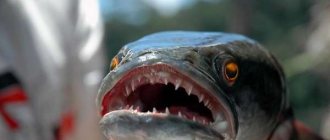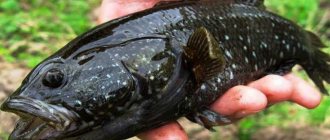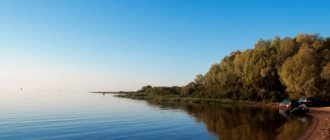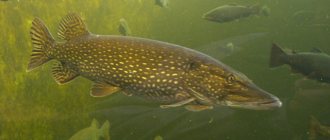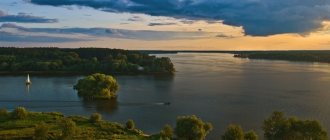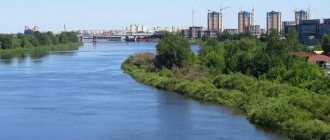Subfamily of broadheads
One of the most numerous representatives of the aquatic fauna of Lake Baikal is the broadhead fish. The most interesting subspecies include:
- Loose broadhead. Translucent fish, covered with delicate skin, characterized by a soft head and spread dorsal fins. Individuals with a pink tint may be found. The length of the fish barely exceeds 10 cm. The creature is found very rarely, at a depth of 900 to 1400 m.
- Humpback broadhead. The fish has a harder skull that still retains some softness. An elongated body with rough spines, the back is brown, and the sides are yellow. The length reaches 11-17 cm. Lives at depths from 25 to 600 m.
- Broad-winged broadhead. This fish has a skull with increased density and a higher body shape with steep slopes. Spines are located under the pectoral fins. The body color ranges from dark brown to brown, the abdomen is always light. There are brown spots on the back. It lives at depths from 50 to 600 m.
- Great red broadhead. The fish, reaching 30 cm in length, is distinguished by a red tint to the body and yellow spots located on it. During the spawning period, males become very bright.
- Half-naked broadhead. The fish with a soft skull differs from its relatives in its small size - only up to 7 cm in length. It lives in the north of the lake at a depth of 200 to 800 m.
- Rough broadhead. A fish with an elongated body, it differs from others by a characteristic tubercle on the muzzle. The color of the carcass is usually pale yellow, and the fins are gray. The rough broadhead reaches 11.5 cm in length and lives at depths of up to 400 m.
- Deep-sea broadhead. It is distinguished by a soft body and an elongated snout, as well as short fins. The body is pink or white, reaches only 8 cm in length, and lives at a depth of up to 1.4 km.
Another interesting representative among broadheads is the stone fish. It got its name due to the unusual shade of stone color. The body length is usually within 9 cm, but some individuals grow up to 14 cm.
What fish live on Baikal
Baikal is the most important lake, home to valuable commercial fish. Their diversity and catch volumes are amazing. According to these characteristics, the lake is in some ways superior to the sea.
Game fish
There are only thirteen commercial species. These include:
- Perch is a genus of the perch family. The length of the prolific fish does not exceed 50 cm and the weight is 2 kg, although larger individuals are found. It lives in the estuaries of rivers flowing into the lake and goes into the rivers for the winter.
- Crucian carp is a predominantly silver species that lives in lakeside oxbow lakes. A fin with spiny rays stretches along the back of the body, 25-30 cm long. Average weight 300 grams.
- Dace is a fish with silvery scales and a yellow anal fin that lives along the coastal zone. During the fishing season, up to 300 tons of this animal are caught. The number, for inexplicable reasons, fluctuates sharply from year to year.
- Roach is a numerous Siberian species of ray-finned fish from the carp family. Length 12-19 cm. The maximum lifespan of a small fish is 21 years.
- Pike – found near the shore in warm water. It goes to the river for the winter. He is the chief lake orderly - he destroys sick and weak fish, cleaning the reservoir. Can feast on perch and small pike. Pike takes up a sufficient amount of the total catch. A recognized successful catch in sport fishing.
- Shirokolobki (gobies) - 27 species are known. They are called so because of their large head. Endemic bottom fish live throughout the lake. They mainly catch those who live closer to the shores.
Valuable commercial species
There are fish that are the most valuable and in demand.
The famous grayling comes in two varieties.
- Black - prefers a bottom with rocky soil at great depths. The body and fins have a reddish-brown color, which turns rich red during spawning. It spawns in spring in the tributaries of the lake. It persistently moves upward, overcoming the oncoming current. Weight - within 2 kg.
- White - lives in the coastal zone at a depth of 50 meters. Its cavity contains more fat deposits than the black one. This makes the meat softer and whiter. It grows faster, reaching a weight of 3.5 kg. Spawns directly in the lake basin.
The critical situation with the deterioration of habitat conditions in lakes and rivers of Siberia as a result of technogenic impact (gold mining, construction, etc.) is leading to the disappearance of grayling. It is listed in the Red Book of Russia.
Omul - the body of an endemic fish is covered with small scales. Reaches a mass of 2 kg. Some subspecies live along the shore, others far from the shore on the surface of the water, and there are deep-sea subspecies. They differ in the type of population - they spawn in tributaries of the reservoir of different lengths in the autumn period of the year. Prized for its nutritious meat, it is a traditional dish of local people.
Taimen belongs to the salmon family. Its color changes as it grows; when it reaches sexual maturity, it turns into a large, long individual with a wide back, a large head with a row of sharp teeth. Fish swimming to spawn are distinguished by their cheerful nuptial plumage - crimson spots on the body and a bright anal fin.
A ten-year-old individual weighs 20–30 kg.
Taimen is already included in the Red Book. It is recognized as an endangered fish.
Whitefish is a species that lives in the lake all year round, and there is a lake-river species that swims into rivers in winter. Habitat: entire lake, but prefers shallow water and sandy soil. In winter it descends to 150 meters and below.
Sturgeon is an ancient inhabitant of the underwater world, a delicacy that was first appreciated and described by Archpriest Avvakum, who visited these amazing places in the 17th century.
The large fish is the lone representative of the cartilaginous fish in the lake, which lacks a bony skeleton. It lives at a depth of 30-40 meters and goes to river mouths to spend the winter.
Males begin to be interested in females at the age of 16 years and a height of 1 meter. They spawn once every 2 years on rivers a kilometer from the reservoir.
Fishing for sturgeon is prohibited; it is bred artificially to restore the population, and partially released into the lake.
Included in the list of endangered species in the Red Books of Russia, Buryatia and the Chita region.
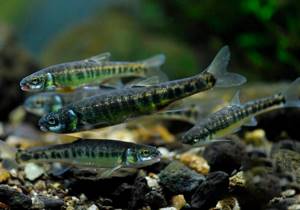
Burbot is the most prolific species. An old resident of the lake since the last ice age. Arrived from the north along the rivers. The back of the burbot is olive-colored with black spots, the belly is gray. Rare scales are covered with mucus containing a natural antibiotic. The comfortable temperature for it is 9 – 13 degrees at a depth of 60 – 180 meters. Spawns in mid-winter, fecundity is 50 – 2700 eggs with a diameter of 1 – 1.3 mm.
It is considered to be the royal fish due to its special taste. Her liver contains 65% fat. Included in many dietary dishes.
Amur carp was artificially introduced into the lake almost a hundred years ago. Brought from the Amur River basin. It adapted perfectly and began to actively reproduce. In the middle of the last century, the catch totaled up to 100 thousand tons, and is now under state protection.
Big Golomyanka
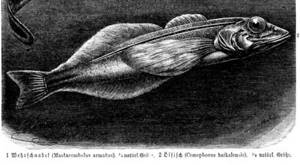
This fish was discovered at the end of the 18th century by Russian scientists. It has a large reserve of fat. There are 2 species: the large golomyanka reaches 23 cm in size, and the small one - only 16 cm. They live quite a long time, and the weight of the fish ranges from 50 to 100 g. Golomyankas live at the very bottom of Baikal, making up up to 80% of the biomass of the reservoir. This is the most numerous species, which often serves as food for larger predators.
Amur catfish
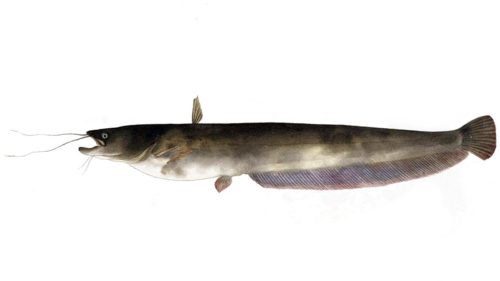
One of the largest inhabitants of Baikal, reaching a weight of 1830 g, and the length of its body often exceeds 55 cm. The head of the catfish is wide and flat, and its characteristic feature is long mustache. It is green in color and the belly is light yellow. Prefers to settle in regions where the water is stagnant and there is no current. As an exception, there are Amur catfish, whose weight exceeds 6 kg.
Goldfish
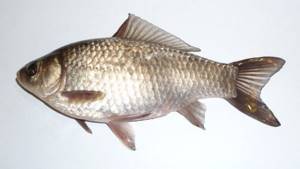
It is distinguished by a long fin located on the back. It is easy to prick yourself on it - there are sharp needles along the edge. The color of the body of crucian carp is from green-brown to brown, smoothly flowing into golden and silver on the abdomen. It is very rare in Baikal, but numerous in Angara, Kichera, Tyya. The average weight reaches 350 g, and the length is 20 cm, but sometimes large individuals weighing up to 1.5 kg are found.
Types of fish in Baikal
The lake is home to a unique creature - a sponge; scientists recently classified it as an animal. Thanks to the tireless activity of this microorganism, the water remains crystal clear and transparent. Excellent conditions are created for the habitat and reproduction of fish.
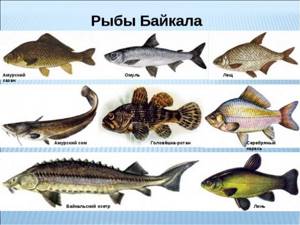
The unique property of Baikal lies in the peculiarity of its ice. Thanks to its transparency, the sun's rays allow plankton to develop. In severe frost, the ice cracks, which allows the water to become enriched with oxygen. Therefore, even with a meter thick ice cover, the fish do not die from suffocation.
Ichthyologists have identified 15 families - salmon, cod, catfish, sturgeon, carp, etc. The famous grayling, golomyanka, whitefish are found, and the most popular fish is omul, the symbol of Baikal. It is considered the best souvenir that travelers and tourists bring from Buryatia.
Main Baltic fish
Omul is a fish that lives only in the clear waters of Lake Baikal. The endemic, according to ichthyologists, entered the lake from the waters of the Arctic Ocean along rivers during the last ice age. It adapted to local conditions and formed several intraspecific forms. This fish is not found in any body of water on the continent. Because of its uniqueness, the omul is called the symbol of the Siberian lake.
Now three populations are known, they differ in habitat:
- Severobaikalskaya, also known as Barguzinskaya (coastal),
- Chivyrkuiskaya (deep-sea),
- Selenga (pelagic).
Tender, juicy omul meat is healthy; it contains polyunsaturated fatty acids and vitamins that are quickly absorbed by the body. The average weight of omul is 1-3 kg; fishing occurs almost throughout the year, except for the autumn spawning period.
A breathtaking sight when a herd of omul, like bluish living silver, flows into the river to spawn. This must be seen in person, not in photos. On rocky, steep places on the bottom, adult (4 to 9 years old) females leave their eggs, and immediately swim back to Baikal.
After 8 months, the eggs turn into fry. But it will take ten years before it turns into a strong, graceful fish. Omuls live for 25 years.

The female spawns 5–6 times throughout her life.
Baikal sturgeon
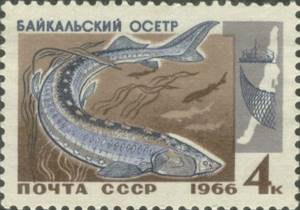
The most ancient fish of Baikal, mentions of which are found in documents of the 17th century and earlier. The only cartilaginous fish living in this reservoir. It is distinguished by its large size and unique shape of the muzzle and body. By the age of 20, the weight of females reaches 14 kg with a body length of 120 cm. The older the fish becomes, the larger it is in size. Sturgeon is a creature that produces black caviar.
The multifaceted water world of Baikal abounds with different fish, animals and plants. You can study it for a long time, but we must not forget about the protection of this wonderful lake: numerous factories, tourist activities of people, the construction of gas pipelines and roads have a negative impact on the environment and lead to pollution of the most beautiful and mysterious lake on the planet.
Didn't find what you were looking for? Use the site search form
Fishing on the rivers of Buryatia
Buryatia is famous not only for its lakes and numerous rivers, offering real “wild” fishing, where unique sensations and a good catch await you. In particular, fishing in Buryatia on the Selenga is a good opportunity to catch grayling, omul and even taimen. Pike, catfish and bream are found here in large quantities, and fishermen have a good opportunity to test various tackles and baits on the Selenga and its tributaries. Among the tributaries of the Selenga, the Khilok deserves special attention, and fishing in Buryatia on the Khilok River is carried out all year round, while the composition of the ichthyofauna resembles neighboring reservoirs, the first ice appears here at the end of October, and the river opens for spring fishing in mid-April. Most of the rivers of Buryatia are of mountainous origin, so fishing here differs significantly from “aquarium” fishing in paid reservoirs of the Moscow region, so fishermen must have various gear with them, and do not forget the difficult weather conditions in Buryatia in winter.
